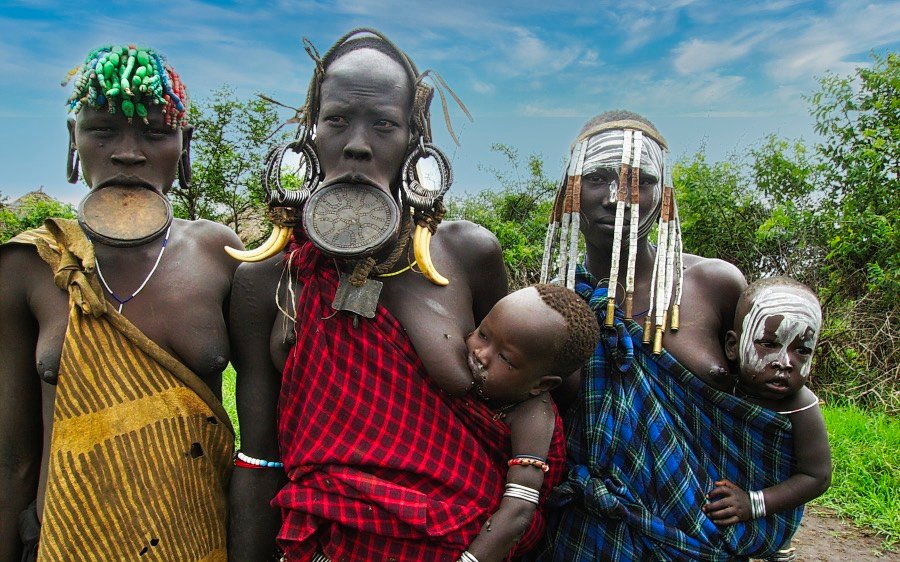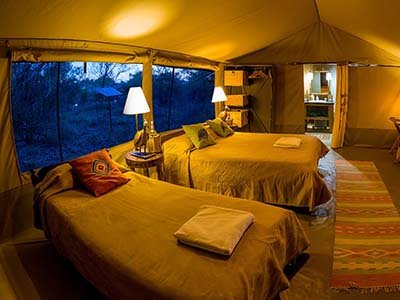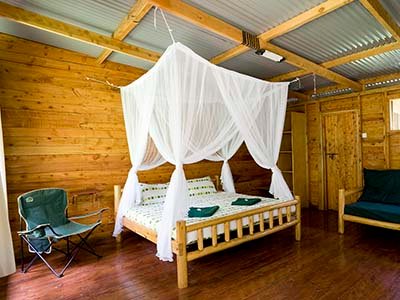Mago National Park
Mago National Park, a hidden gem in the heart of Ethiopia’s Southern Nations, Nationalities, and Peoples’ Region. Established in 1979, this park is the newest addition to Ethiopia’s National Parks and covers an area of 2162 square kilometers.
Mago National Park is situated about 782 kilometers south of Addis Ababa, and its location is divided by the Mago River, a tributary of the Omo River, into two parts.
To the west of the park is the Tama Wildlife Reserve, which is separated by the Tama River, while the Murle Controlled Hunting Area is located to the south, with Lake Dipa stretching along the left side of the lower Omo. The park office is located 115 kilometers north of Omorate and 26 kilometers southwest of Jinka, and all roads to and from the park are unpaved.
Mago National Park boasts a diverse range of ecosystems, including rivers and riverine forests, wetlands along the lower Mago and around Lake Dipa, various grasslands on the more level areas, and scrub on the hillsides. With savannas, acacia trees, shrublands, and woodlands, this park is home to a variety of plant and animal species. The largest trees in the park are found in the riverine forest beside the Omo, Mago, and Neri rivers.
Wildlife in Mago National Park
The protected ecology of Mago National Park is home to an impressive variety of animals. For anyone interested in seeing some of Africa’s most well-known creatures in their native environment, the park is a paradise. Mago National Park is an excellent place to go on safari because it is home to 74 different animal species.
While stately Giraffes munch the acacia trees, herds of Lelwel Hartebeest, Beisa oryx, Cape Buffalo, and African Elephant wander the wide plains. Nile crocodiles bask on the riverbank while hippos frolic in the water. Mago National Park is also home to the endangered Gerenuk, or “giraffe gazelle,” whose long neck and skinny legs make it a one-of-a-kind sight.
There are a lot of birds at Mago National Park, too; 237 different species have been spotted there. The Black-rumped waxbill frequents the dense vegetation along streams and swamps, whereas the Dusky babbler is a rare sight indeed. Other riverine birds include the Pel’s fishing owl, Egyptian plover, and snowy-crowned robin-chat, in addition to the more common Allen’s gallinule, Violet wood hoopoe, and Striated heron.
Activities in and around Mago National Park
Bird Watching
Experience the beauty of nature by indulging in the popular activity of bird watching in and around Mago National Park. Discover the breathtaking diversity of bird species at our park, boasting an impressive 205 varieties, including five rare Ethiopian Endemics such as the Ethiopian Siskin, Wattled Ibis, Yellow-throated Serin, White-winged Cliff Chat, and Black-winged Lovebird. Furthermore, avid bird enthusiasts will be delighted to discover a plethora of fascinating avian species, including the rare Dusky Babbler, Black-rumped Waxbill, Allen’s Gallinule, Violet Wood Hoopoe, Striated Heron, Pel’s Fishing Owl, Egyptian Plover, and Snowy-crowned Robin-chat.
Discover the ultimate bird-watching experience at Mago National Park, where numerous prime locations await you. Lake Dipa is an exceptional destination for bird enthusiasts seeking to witness the Striated heron and the rare Dusky Babbler. Experience the thrill of observing the elusive Black-rumped waxbill in its natural habitat amidst the lush greenery along streams and swamp edges. Discover the breathtaking beauty of Pel’s fishing owl, Egyptian plover, and snowy-crowned robin-chat in their natural habitat along the riverine landscapes.
Cultural Encounters
Immerse yourself in the rich cultural heritage of Mago National Park by engaging with the indigenous tribes residing in the area. This is an unparalleled opportunity to encounter a way of life that has been preserved for generations. Discover the fascinating cultures of various tribes and enrich your travel experience with a deeper understanding of their traditions and way of life.
- The Mursi Tribe:
Discover the fascinating Mursi tribe, renowned for its distinctive lip plates and intricate scarification designs. Experience the authentic traditions of this destination’s rich history and culture, where visitors can immerse themselves in the timeless practises of cattle herding, hunting, and farming. - The Hamar Tribe:
Experience the cultural richness of the Hamar tribe and witness their awe-inspiring bull-jumping ceremony, a traditional rite of passage for young men. Join us on a journey to discover the unique customs and traditions of this fascinating tribe. Experience the rich cultural heritage of this destination by witnessing the captivating traditional practices, including the art of body painting and intricate hairstyling. Immerse yourself in the local traditions and learn about their fascinating customs. - The Karo Tribe of Kolcho:
Discover the enchanting Karo Tribe of Kolcho, a hidden gem nestled along the picturesque banks of the Omo River. Immerse yourself in the unique culture of this small community of 1,500 Omotic speakers and witness their fascinating way of life. Experience the unique cultural tradition of body painting, a form of communication that conveys social status and personal identity. Immerse yourself in the local culture and heritage by exploring the region’s rich history and traditions, which include time-honored practises such as fishing and agriculture.

White water rafting and fishing on the Omo River
Adventure sports fans go to the Omo River, which runs for 760 km across Ethiopia and Kenya. The river is one of the top rafting locations in Africa since it flows through a series of breathtaking canyons and steep gorges. The river also supports a variety of fish species, including tilapia, tigerfish, catfish, and Nile perch.
The Omo River offers thrilling rafting excursions that may be catered to different ability levels. There are tranquil lengths of water that meander through lush forests and gorgeous scenery for those looking for a leisurely and scenic float. Class I to Class V rapids are available for those looking for a more difficult journey, giving even seasoned rafters an adrenaline boost.
The Omo River is a great place to go fishing. Local communities rely on the river as a source of money and nutrition via fishing. Visitors can embark on guided trips with seasoned anglers or accompany locals on their fishing excursions. The river offers many opportunity to capture some of the most sought-after fish species in the area, whether fly fishing or spinning.
Along with fishing and rafting thrills, the Omo River also provides beautiful beauty and one-of-a-kind cultural experiences. A variety of fauna, including baboons, crocodiles, and hippos, call the river’s lush woods, rocky outcrops, and towering cliffs home. Additionally, the river passes through isolated tribal areas where visitors may observe their traditional way of life and discover more about their distinct cultures and customs.
How to Get to Mago National Park
Mago National Park is a difficult-to-get secluded location, but the trip is definitely worth it. Jinka Airport, which is around 35 kilometres from the park, is the closest airport. There aren’t many flights out of the airport, though, so it’s not always feasible to book a direct trip from Addis Ababa. Alternative travel options include a lengthy, 14–16-hour drive from Addis Ababa. There are also public buses and minibuses available for individuals who would rather not drive. Despite the distance, the trip through the Lower Omo Valley and the Ethiopian highlands is pleasant and offers views of rural life and beautiful scenery.
Best Time to Visit Mago National Park
Depending on your interests, you should visit Mago National Park at the ideal time. The dry season, which lasts from November to March, is the best time to see animals. It is easier to notice the park’s various species, including lions, leopards, elephants, giraffes, and buffalos, during this time since the foliage is sparse and dry. During this period, rivers and watering holes are also less common, which causes animals to congregate around the remaining water sources and provide fantastic possibilities for game viewing.
But for those who enjoy nature and birdwatching, the wet season, which lasts from April to October, is ideal. When it rains, the park comes to life, drawing a variety of bird species, including migrating birds from Europe and Asia, attracted by the rich foliage. Numerous aquatic birds, including herons, pelicans, and kingfishers, can be found in the wetlands surrounding the park. Visitors who want to explore the park’s beauty will find it in an absolutely stunning and picturesque setting thanks to the lush vegetation and the cascading waterfalls.
Accommodation Options
When making travel plans to Mago National Park, accommodations are a crucial factor to take into account. For diverse tastes and budgets, there are fortunately a variety of possibilities.
The unique sensation of camping in the middle of nature without compromising comfort makes tent camps a popular option. These two alternatives, Mago Tented Camp and Jinka Resort Camp, both provide cosy tents with private facilities and food.
Mago Lodge and Jinka Eco-Lodge are excellent choices for those who like lodges since they provide more conventional lodging with individual rooms and other facilities. With permission, camping is also permitted inside the park, allowing tourists to truly experience the wildness.
Health and Safety Tips
Prioritising your health and safety is crucial when visiting Mago National Park. Before entering the park, vaccinations against yellow fever and malaria are advised. Visitors should also bring a first aid kit and any essential medications.
To have a secure and pleasurable trip, it is crucial to respect the animals and listen to your guides.
Walking off the paths might harm the animals’ natural habitat, so staying on the trails is crucial for both safety and conservation.
Additionally, it is advised to stay indoors at night since nocturnal creatures may be threatening and unpredictable. Visitors may enjoy a wonderful and secure trip at Mago National Park by implementing these safety measures.
Where is and what is the Mago National Park?
Mago National Park is a protected area in the Omo Valley in southern Ethiopia. To protect the local animals and natural ecosystem, the park was created in 1979. There are several unique and endangered species of animals living there, which inhabit an area of around 2,162 square kilometres.
What types of animals are there in Mago National Park?
Large concentrations of elephants, buffalo, giraffes, zebras, and numerous types of antelope may be found in Mago National Park, which is well-recognised for its wide variety of wildlife. The park is also home to several bird species, including several endemics to Ethiopia, lions, leopards, and hyenas. Numerous insects and reptiles reside in the park.
What indigenous groups occupy Mago National Park and its environs, and what customs are observed by them?
The Mursi, Hamar, and Karo tribes are just a few of the indigenous groups who reside in and surrounding Mago National Park. These tribes have distinctive cultural practices, such as ceremonial traditions, distinctive haircuts, and body adornments. While the Hamar tribe is well-known for its bull-jumping ceremony, Mursi women are known for their lip plates.
What, besides the animals, are the primary draws of Mago National Park?
The breathtaking scenery of Mago National Park, which includes mountains, valleys, and rivers, is well-known. Cultural interactions with the native tribes residing in and around the park are also available to visitors. The park also provides chances for pursuits including rafting, fishing, and birdwatching.
What use do the Omo River and the Mago River serve in the park?
The ecosystem of Mago National Park depends on the Omo and Mago Rivers. The rivers provide a source of freshwater for the park’s species and maintain its distinctive ecosystems. Additionally, the Omo River is important to the local indigenous tribes’ cultural practices.
What season is ideal for visiting Mago National Park?
The dry season, from November to March, is the ideal time to explore Mago National Park. The wildlife is more active and accessible at this time. But the wet season, which lasts from April to October, can also be a fantastic time for bird watching and to take in the lush vegetation.
What lodging options are available to park visitors?
Tented camps like Mago Tented Camp and Jinka Resort Camp as well as lodges like Mago Lodge and Jinka Eco-Lodge are available for guests of Mago National Park. With a permit, camping is also permitted inside the park.
How can visitors to Mago National Park engage in sustainable tourism?
By respecting the species and paying attention to the rangers’ advice, visitors to Mago National Park may engage in sustainable tourism. Additionally, visitors ought to use eco-friendly products and refrain from littering. It is also advised to support regional economies and communities by buying goods produced nearby.
What is the cultural heritage and history of Mago National Park?
The Mago River, which runs through the park, inspired the name of the area’s national park, which was created in 1979. The park was established to protect the area’s distinctive wildlife and cultural history. The indigenous tribes who inhabit the park and its surroundings have a long history and a rich cultural legacy. Through cultural encounters and conversations, park visitors may learn about the past and customs of the Mursi, Karo, and Hamar tribes.
What are some practical travel suggestions and how may people arrange a trip to Mago National Park?
Selecting their preferred form of transportation will help visitors prepare for their journey to Mago National Park. They have two options: they may drive from Addis Ababa or they can fly into Jinka Airport. Visitors should also think about the season they are intending to come, to since the dry season, which runs from November to March, is the greatest time to see wildlife, while the rainy season, which runs from April to October, is the best time to see birds.
It is advised that travellers take a first aid kit, and any essential medications, and get vaccinated against yellow fever and malaria before travelling. Along with respecting the animals, visitors should adhere to their guides’ recommendations, stay on approved pathways, and avoid going out at night.


